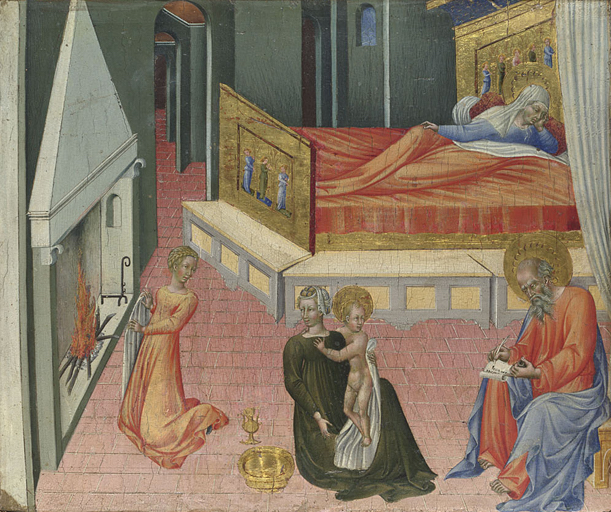
by Revd Canon Ian Morter
For those who are able to have children there is something very special about the anticipated birth of a child. For some this joy is something denied and can cause great sadness. Such as the case in the New Testament account of Elizabeth and Zachariah. We can read the story in the St Luke’s Gospel chapter one. We are told that the couple had wanted a child and after many years were still childless and this was the cause of great sadness for them both. Zachariah was a priest of the Temple in Jerusalem and lived but a few miles away from the city to enable him to fulfil his duties. It was while leading worship in the Sanctuary of Temple that Zachariah had an angelic visitation, the Archangel Gabriel foretold that although he and his wife Elizabeth were getting on in years, they would conceive and have a son who would be greatly blessed by God. Zachariah found this message difficult to accept and because of his doubting the promise of God he would be struck dumb until the child was born.
This Saturday 24th June is the day the Church keeps the Birth of John the Baptist, the longed for child of Zachariah and Elizabeth. And I would like to share with you a painting of this event which I discovered some years ago in the Sainsbury Wing of the National Gallery in London.
It is a very small painting in egg tempera on a wooden panel, it is only about 30 x 35 cm because it is part of a Predella, telling the life of John the Baptist in a series of four panels. It is by Giovanni di Paolo di Grazia who lived between 1403 – 1482 and worked primarily in Siena and was a prominent exponent of the Sienesse style of the 15th Century. He was not only a skilled artist but also a greatly skilled illustrator of manuscript, one of his most famous being the illustrations for Dante’s Divine Comedy, Paradiso.
Back to the Birth of John the Baptist, after Zachariah’s visitation by Gabriel he was indeed unable to speak to those who were waiting outside the Sanctuary, but he completed his time of Temple service and returned home to Elizabeth. In due time, just as the Archangel Gabriel had foretold, Elizabeth became pregnant and when the time came for her to give birth she had a son. When the family and friends were gathering to rejoice with the parents on the long anticipated birth of the child they were all expecting this little boy to be named Zachariah after his father. But Elizabeth said “No he is to be called John” (meaning beloved of God). So they turned to Zachariah, who was still unable to speak, and asked him what the child was to be called. He asked for a writing tablet and wrote ‘His name is John’. And immediately Zachariah’s speech returned and Zachariah praised God for his kindness and prophesied that John would have a special role in God’s planned redemption of Israel. This prophecy we know as the Benedictus, is the central canticle in Morning Prayer and is sometimes called ‘The Song of Zachariah.’
Our painting by Giovanni di Paolao shows the imagined bed chamber in the house of Elizabeth & Zachariah, although it is in the style of a wealthy late-mediaeval Italian house. Elizabeth is still reclining after the exertions of child birth, while the infant John is being bathed by a mid-wife with a maid warming his swaddling cloth before the fire. The elderly father, Zachariah is writing on his scroll. ‘His name is John’.
So, at this time, as we remember the wonderful birth of John the Baptist, we also recall his ministry of preparation for Jesus, the Messiah, John was the forerunner. Just as his father Zachariah said in his prophecy “And you, child, will be called the prophecy of the Most High; for you will go before the Lord to prepare his ways, to give knowledge of salvation to his people by the forgiveness of their sins. By the tender mercy of our God, the dawn from on high will break upon us, to give light to those who sit in darkness and in the shadow of death, to guide our feet into the way of peace.”